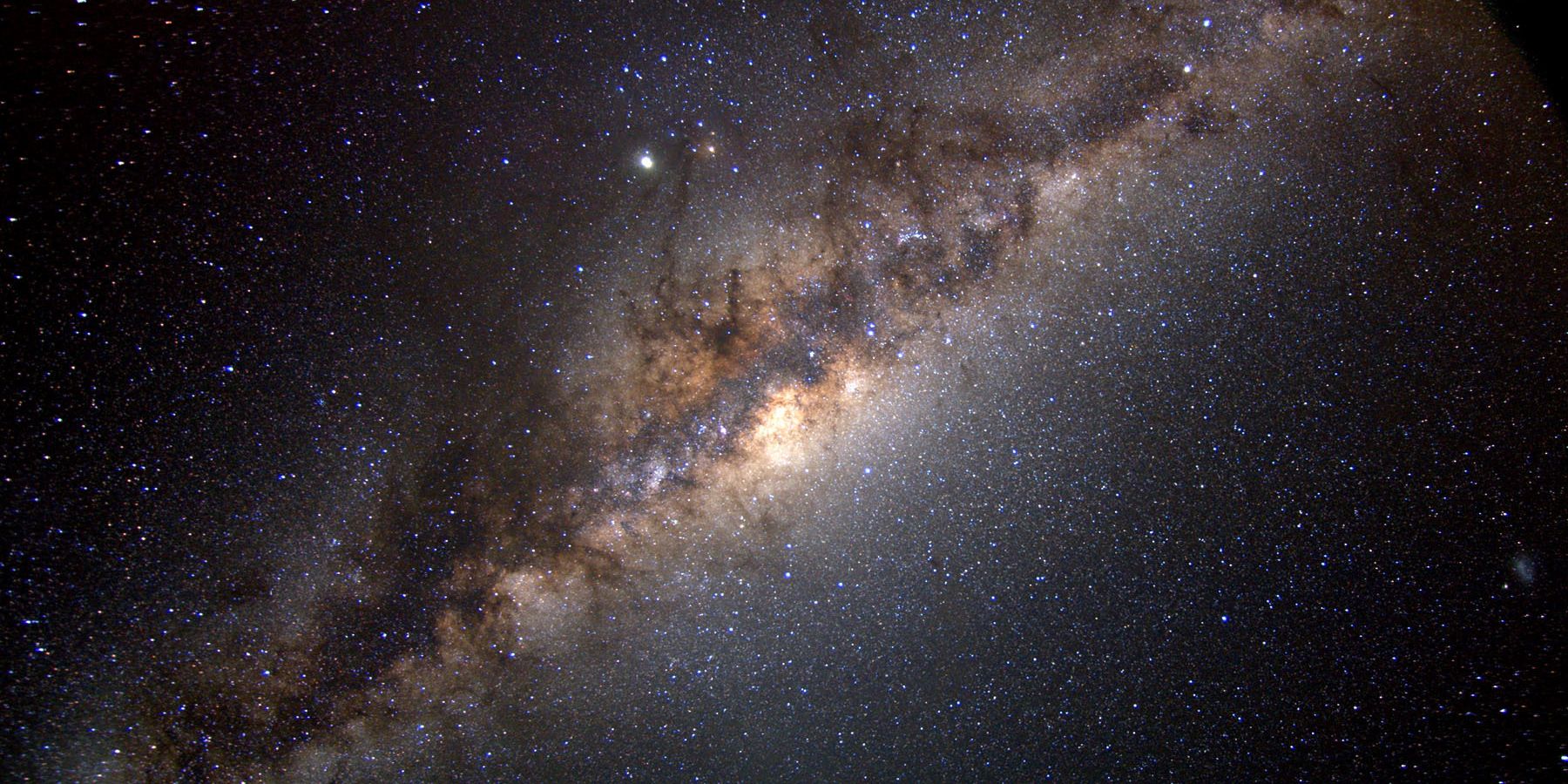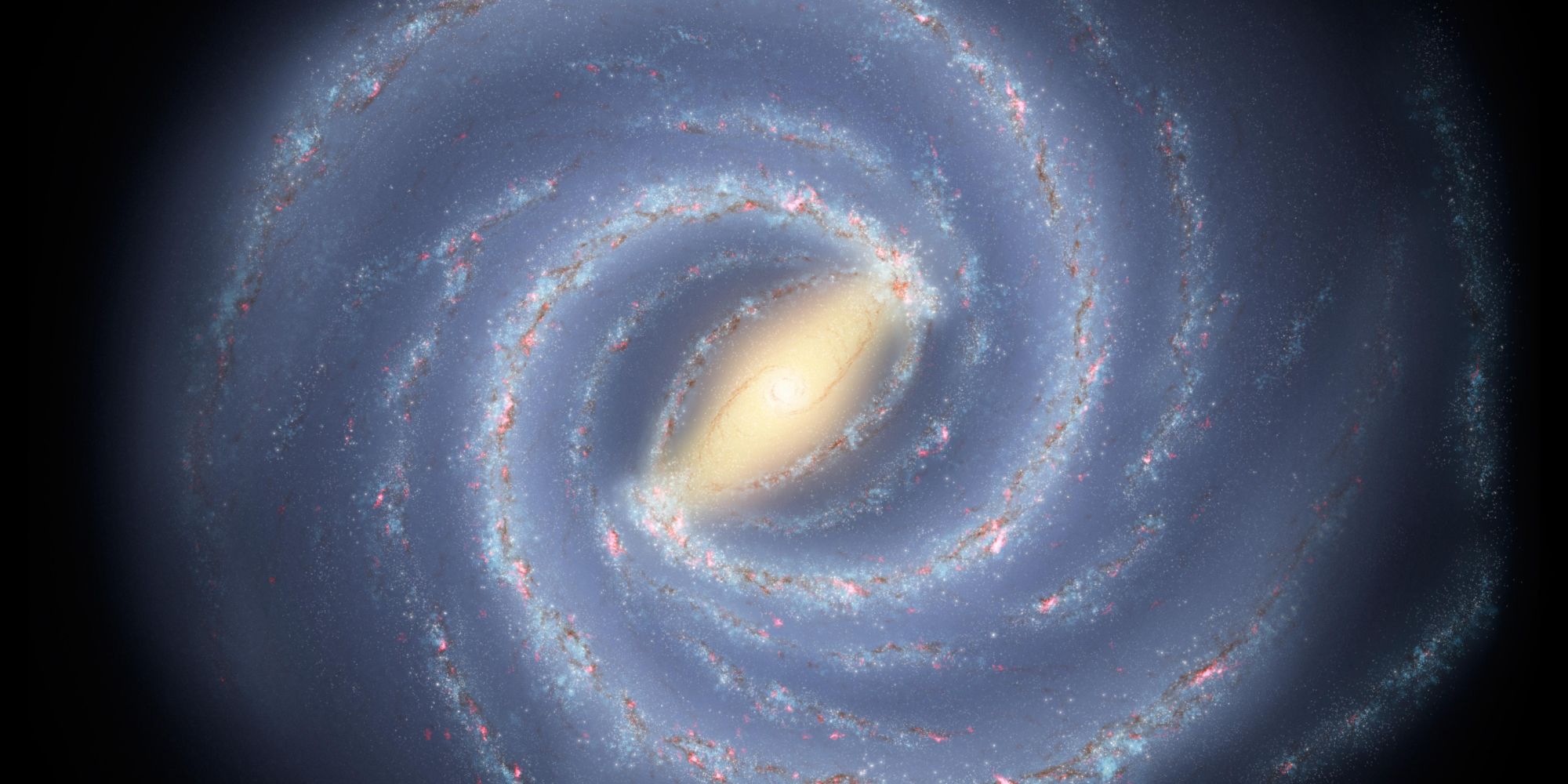The Milky Way is best known for its iconic, lanky arms — but what if it didn't really look like that? The scale of outer space is often difficult to grasp. Earth resides in the Solar System. The Sun lies at its center, eight planets orbit the firey star, and the whole system has a radius of around 287.46 billion kilometers. Sounds big, right? Not at all! The Solar System is but one of many within the Milky Way galaxy — a section in space with between 100 and 400 billion stars, 100 billion planets, and a 52,850 light-year radius. And even then, the Milky Way is but one of some two trillion galaxies in the entire known universe!
While the Milky Way certainly isn't the only galaxy out there, it still stands out for its own reasons. Not only is it the only known galaxy with life, but it also has a truly beautiful shape. Surrounding the supermassive black hole at the center of the Milky Way are numerous arms. This is why the Milky Way is considered a spiral galaxy. Because of the way its stars, gas, and dust come together, it takes on a dazzling spiral shape with intricate arms circling around its center.
However, the way these arms look might be a lot different than previously believed. It's long been thought that all of the Milky Way's arms have a narrow build with a tight structure. According to new research, that may not actually be true. Instead, it's now been revealed that at least one arm of the Milky Way is much clumpier and less organized than its siblings. As Josh Peek from the Space Telescope Science Institute explains, "We have long had a picture of the galaxy in our minds, based on a combination of measurements and inference. This work calls that picture into question. We don’t see evidence that pieces we’ve been connecting up are actually connected."
How Scientists Found 'Lumps' In The Milky Way
Mapping the Milky Way is no easy task. Given its massive size and Earth's placement inside it, accurately identifying its shape and structure is a lot of work. The process starts with astronomers measuring the distance between stars and star clusters using natural radio signals that come from them. When this inevitably leaves gaps, astronomers then start looking at the motion of gas clouds. Thanks to the way these clouds move with the Milky Way's rotation, this can reveal the general structure of the galaxy. However, this assumes everything is happening in an ideal manner with no anomalies.
In an attempt to look at the Milky Way's structure in a different fashion, astronomers started examining the galaxy's dust — not the gas. Peek and his team used this method on the Perseus arm in the Milky Way, one that's "beyond our Sun in the Milky Way's disk." The result? Astronomers found that many dust clouds aren't within Persus's perceived arm. Rather, they're scattered across space with a distance up to 10,000 light-years. As Peek explains, "We don’t have long, skinny spiral arms after all, at least in this section of the galaxy. There are chunks and lumps that don’t look like anything."
What does all of this mean? At least for the outer disk of the Milky Way, it likely looks similar to Messier 83 — a nearby spiral galaxy whose arms are much shorter and more chaotic. Astronomers also plan to look at the inner portion of the Milky Way and see if it too shares this clumpy, disorganized appearance. It's unclear what exactly they'll find, but it could further upend our view of the Milky Way as we know it.
Source: NASA


